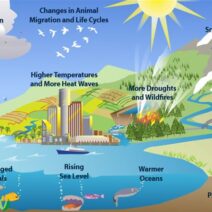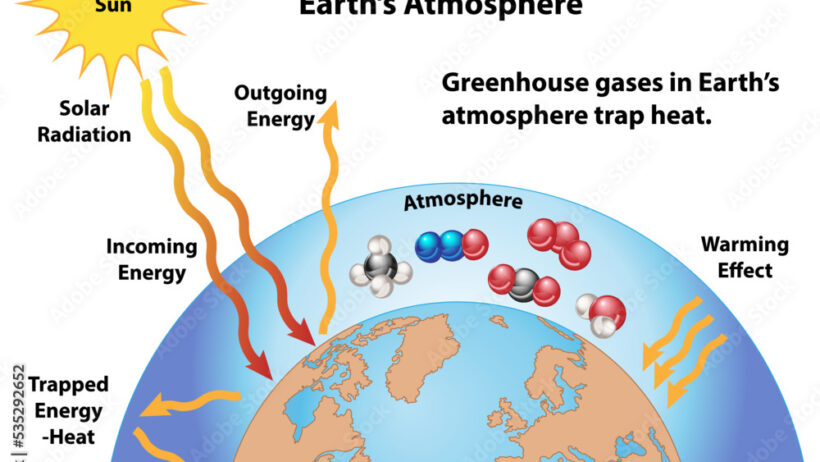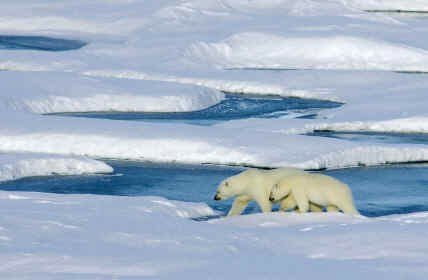Does carbon dioxide really make the air warmer? It’s an intriguing question that beckons a deeper inquiry into the mechanisms of the greenhouse gas effect. At the heart of this phenomenon is a complex interplay between sunlight, the Earth’s surface, and the atmosphere, where carbon dioxide (CO2) acts as a crucial player. To understand this interaction, we must first delve into the basic science that underpins the greenhouse effect.
Solar radiation from the sun is the primary source of energy for our planet. This energy travels through space and reaches the Earth, where it is either absorbed by the land and oceans or reflected back into space. The energy that is absorbed warms the Earth’s surface, which in turn emits heat in the form of infrared radiation. Herein lies the pivotal moment: rather than allowing all this heat to escape into the atmosphere unimpeded, certain gases—including carbon dioxide—trap it, creating a ‘greenhouse’ effect.
This effect is vital to life as we know it. Without it, the Earth’s average temperature would plummet, rendering the planet inhospitable. The difficulty arises when examining how human activities have amplified the presence of greenhouse gases in the atmosphere, particularly CO2. Through activities like fossil fuel combustion, deforestation, and large-scale agriculture, anthropogenic emissions have significantly increased atmospheric CO2 concentrations. As such, the question transforms from whether carbon dioxide makes the air warmer to how much additional warmth is being created as a result of human actions.
Let’s explore how carbon dioxide functions as a greenhouse gas. When CO2 molecules absorb infrared radiation, they undergo a process known as vibrational excitation, causing them to re-emit energy in all directions, which can include back towards the Earth’s surface. This leads to a system of warming as heat is effectively caught in the atmospheric web instead of escaping into the cold void of space. It is this retention of heat that raises surface temperatures. The more CO2 in the atmosphere, the more heat can be held, creating a feedback loop that further exacerbates warming.
To contextualize this phenomenon, consider a well-cooked lasagna emerging from the oven. If left in an unsealed enclosure, the lasagna retains heat much better than if it were exposed to open air. The gases in our atmosphere create a similar effect, reinforcing the heat captured by the Earth. In essence, carbon dioxide acts much like that enclosure, preventing heat from dissipating. But there is a caveat; the Earth’s ability to absorb and release heat is influenced by a variety of factors, including land use, ocean currents, and even natural phenomena like volcanic eruptions. Thus, while CO2 plays a critical role, it is part of a broader climatic portrait.
It’s important to recognize the scientific consensus surrounding the impact of rising CO2 levels. According to a multitude of studies, the correlation between increased carbon dioxide concentrations and rising global temperatures is irrefutable. Since the Industrial Revolution, atmospheric CO2 levels have risen dramatically—from about 280 parts per million (ppm) to over 400 ppm. As a direct consequence, global temperatures have risen approximately 1.2 degrees Celsius since the late 19th century. This seemingly modest increase harbors profound implications, as even a small shift in temperature can trigger catastrophic consequences for ecosystems and human societies alike.
Now, let’s introduce a playful challenge to this matter: what if we were able to eliminate carbon dioxide from the atmosphere entirely? While this piques curiosity, it also demonstrates the indispensable nature of CO2. Plants rely on carbon dioxide for photosynthesis—the very process that underpins life by producing oxygen and organic matter. Therefore, while too much carbon dioxide leads to warming, having no CO2 would be equally catastrophic, as it would stifle plant growth, disrupt ecosystems, and ultimately jeopardize food sources.
The quest for balance becomes a pivotal theme in the discourse on climate change. Effective carbon management, including carbon capture and storage (CCS) technologies, reforestation, and transitioning to renewable energy sources, emerges as a strategic response to mitigate the deleterious effects of excess greenhouse gases. Such measures aim to stabilize atmospheric CO2 levels while allowing for necessary biological processes to continue unhindered.
Moreover, the societal and economic stakes of climate action are immense. The ramifications of unchecked warming include rising sea levels, increased frequency of extreme weather events, and disruptions to agriculture and water supplies. These changes compel governments, organizations, and individuals to rethink their energy consumption patterns and carbon footprints. The transition to sustainability is no longer a choice but a necessity, urging everyone to participate in collective actions aimed at reducing greenhouse gas emissions.
In summary, the inquiry into whether carbon dioxide makes the air warmer leads us to a comprehensive understanding of the greenhouse gas effect. CO2 is both vital and detrimental; it helps regulate the Earth’s temperature but has become a double-edged sword in the context of climate change. As society continues to grapple with the effects of increased atmospheric carbon, an informed collective effort toward sustainability may be the key to mitigating its impact. The challenge lies not only in understanding the science but also in applying this knowledge to foster a healthier planet for future generations.







